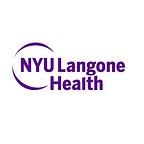Health IT Safety Officer: Navigating the Promise and the Peril
Health IT (HIT) is transforming how we care for patients and will continue to do so as rapidly evolving technology finds novel applications in healthcare delivery. The promise of HIT is that when thoughtfully designed, implemented and used well, it can be a promoter of care transformation to improve patient safety and improve patient outcomes. The peril however, is that when designed and applied inappropriately, HIT can add further layers upon an already complex system, which can lead to unintended adverse consequences. [i]
Since the passage of the Health Information Technology for Economic and Clinical Health (HITECH) Act into law in 2009, there has been an explosion of HIT tools, including electronic health record systems, devices, and other software, all implemented with one of the stated intentions being to improve patient safety and quality of patient care. With this increase in technology, however, there have been reports of unintended consequences and the development of new types of patient safety risks associated with HIT: patient care workflows disrupted by the need to interact with HIT; communication breakdowns caused by misuse of HIT; increased documentation workloads (regulatory requirements enforced by HIT); and alert fatigue are some examples.[ii]
At NYU Langone Health — a healthcare system that includes seven inpatient locations and a large ambulatory practice network — there is a well-established practice that involves reviewing cases of adverse patient outcomes as well as ‘near miss’ events in which a deviation from standard practice occurred but a patient was not harmed. These reviews utilize a Root Cause Analysis (RCA) methodology and are spearheaded by the department of risk management and the system’s Patient Safety Officer. As technology has permeated healthcare over the past decade there has also been a steady rise in the successful identification of HIT issues as possible root causes and as related factors that contributed to adverse events. Additionally, more and more HIT solutions are being proposed as components of corrective actions designed to reduce the likelihood of similar negative events occurring again. Considering all of this, NYU Langone Health created the first of its kind Health IT Safety Officer — like the Patient Safety officer who reports directly to the medical board and whose unique charge is to think differently about the intersection of health IT and safety.
“The role of a Health IT Safety Officer was conceived as one which is analytical, technical and clinical. In transitioning to a digital health environment, a dedicated skill set as well as perspective was needed to analyze safety events in the context of health IT and to fully leverage the potential of clinical informatics upon provisioning the safest of care.” said Paul Testa, MD, Chief Medical Information Officer at NYU Langone Health who first envisaged the role. “In an effort to avoid blame or attribution to human error, it can be simplest to attribute causation to Health IT implementation or tools. The responsibility of the Health IT Safety Officer as a counterbalance is to thoughtfully review such attribution in the RCA process to ensure an accurate understanding of function, use and effect of health technologies” notes Dr. Testa.
Part of a larger patient safety governance structure at NYU Langone, the Health IT Safety Officer has system-wide authority to collaborate with clinical leadership and the departments of Risk Management, Clinical Quality Effectiveness and IT Clinical Systems to help address patient safety issues that have an IT component either in causality or as a possible corrective action. The Health IT Safety Officer participates in the review of all patient safety events at an individual level as well as at hospital-specific monthly meetings in which leadership reviews trends and monitors the progress and effectiveness of corrective actions. Additionally, a system-wide quarterly patient-safety meeting serves as a forum for discussing broader themes and patterns affecting patients and clinicians throughout the NYU Langone Health system.
The role provides a highly-informed perspective on how Health IT may have mitigated as well as contributed to patient safety events, and how it might reduce the likelihood of future adverse patient safety events. Additionally, the HITSO is responsible for educating the clinical community, helping them to understand the possibilities and boundaries of health IT and offering them an assessment of what resources would be necessary to implement a particular IT solution. Lastly, the HITSO works with the health center Patient Safety Officer to identify and develop strategies in response to system-wide health IT safety issues.
As the roles that information, technology and the intersection of the two play in the provision of health care continue to grow and evolve, a Health IT Safety Officer results in a more robust, insightful and informed patient safety system for any healthcare organization. NYU Langone is proud to be a leader in patient safety and to think differently about the ways that health IT can be leveraged to improve patient care. Acting as a voice that deeply understands the interplay between technology and patient care, the Health IT Safety Officer is a vital resource to address issues both retrospectively and proactively. Any health system that’s leveraging information technology as a strategic asset needs to consider the creation of a Health Information Technology Safety Officer.
- Paul Testa, MD, JD, MPH, Chief Medical Information Officer, Assistant Professor, Ronald O. Perelman Department of Emergency Medicine — Connect with me on LinkedIn here
- Eduardo Iturrate, MD, Assistant Professor, Department of Medicine, Medical Director, Clinical Transformation and Analytics, Health IT Patient Safety Officer
[i]Singh H, Sittig DF. Measuring and improving patient safety through health information technology: The Health IT Safety Framework. BMJ Qual Saf. 2016 Apr;25(4):226–32
[i]Health IT and Patient Safety: Building Safer Systems for Better Care. Washington (DC)2011. Institute of Medicine
[ii] Zheng K, Abraham J, Novak LL, Reynolds TL, Gettinger A. A Survey of the Literature on Unintended Consequences Associated with Health Information Technology: 2014–2015. Yearbook of medical informatics. Nov 10 2016(1):13–29.
